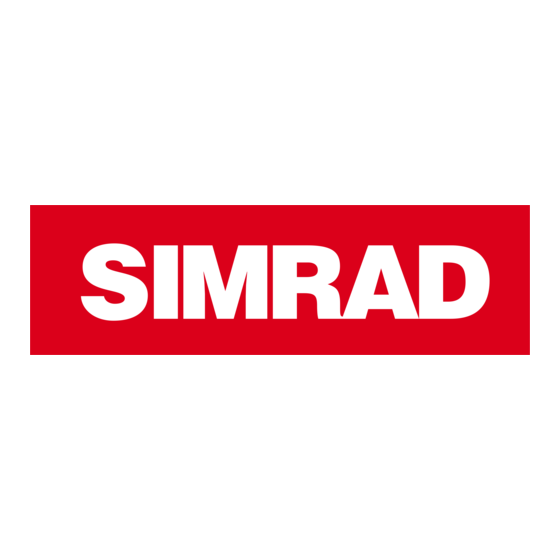
Advertisement
Quick Links
QUICK REFERENCE GUIDE
PI Temperature sensor
Purpose
The PI Temperature sensor monitors
the current water temperature at the
chosen location on the purse seine or
trawl.
Daily operation
Once installed and put to use, the
sensor will automatically be switched
on once the waterswitch is activated.
After an initial startup, the sensor starts
transmission of the current temperature.
When the sensor is not in use, check
that the sensor lamp (D) is not flashing
from time to time, as this indicates that
the sensor is on and is discharging its
batteries.
If you operate with Fast update rate, the
sensor must be charged approximately
every 24 hours. Used with Normal
or Slow update rates, the operational
life is approximately 75 or 150 hours
respectively. The optimal sensor charging
temperature is from +10 to +25° C.
Note that charging sensors at sub-
zero temperatures can create explosive
gasses. Simrad AS assumes no liability
for the improper charging of sensors
or the use of chargers not specified in
Simrad's sensor charging documentation.
Note that charging sensors at sub-zero
temperatures can create explosive gasses.
Sensor configuration
On delivery, all temperature sensors are
configured in Channel 8 and with Fast
update rate. If you use more than one
sensor, you must set them up to operate in
different channels.
Note: The sensor and the PI system
setup must correspond, otherwise the
communication will not work.
To change the sensor setup (channel
selection), use the PI Configurator utility.
The sensor update rate controls how
often the sensor reads and reports
the current depth. Three settings are
available. Note that a faster update rate
will decrease the battery life.
Fast (~4,5 sec): Recommended for purse
seine or trawl, allows immediate update
of changes in the sea temperature.
Normal (~14 sec): Recommended for
trawl and normal fishing with fairly
constant sea temperatures.
Slow (~34 sec): Recommended if you
(A) = The sinking
rate of the net is
monitored by two
Depth sensors
(B) = One
Temperature
sensor is mounted
on the footrope
to monitor the
location of the
thermo-cline.
(C) = One
Temperature
(CD11203A)
sensor is mounted
on the headrope
to monitor if
the sea water
temperature is
favourable for the
target species.
Simrad AS assumes no liability for the
improper charging of sensors or the use of
chargers not specified in Simrad's sensor
charging documentation.
experience constant sea temperatures, or if
maximum operational battery life before
charging is required. The system will be
more sensitive to bad communication
conditions due to the slow data update.
System configuration
Sensor configuration: The sensor
must be configured with a unique sensor
number. Select channel number according
to the sensor's configuration. Write down
the configuration for future reference.
Status & Receiver: The Interference
filter must be switched on. Set it to level
9 if you have noise problems from other
hydroacoustic sources. Note that with
the filter on, it will influence the signal
spectrum shown in the Status display.
Sensor filter: Switch this filter to Light.
Set it to Heavy only if you experience
excessive noise. Position Off will provide
raw data and fastest possible response.
B
A
Main parts
(A) = Negative charging and fastening lug
(B) = Positive charging and fastening lug
(C) = Communication link with vessel
(D) = Location of sensor lamp
(E) = Water switch sensor
(F) = Temperature sensor
A
C
(CD11203B)
857-165108 / Rev.B / February 2005
Advertisement

Summary of Contents for Simrad PI TEMPERATURE - QUICK REFERENCE GUIDE REV B
- Page 1 Simrad AS assumes no liability for the improper charging of sensors or the use of chargers not specified in Simrad AS assumes no liability for the Simrad’s sensor charging documentation. improper charging of sensors or the use of Note that charging sensors at sub-zero chargers not specified in Simrad’s sensor...
- Page 2 Remove the sensor from the purse seine attached to the purse seine wire. www.simrad.com M A X I M I Z I N G Y O U R P E R F O R M A N C E...












Need help?
Do you have a question about the PI TEMPERATURE - QUICK REFERENCE GUIDE REV B and is the answer not in the manual?
Questions and answers